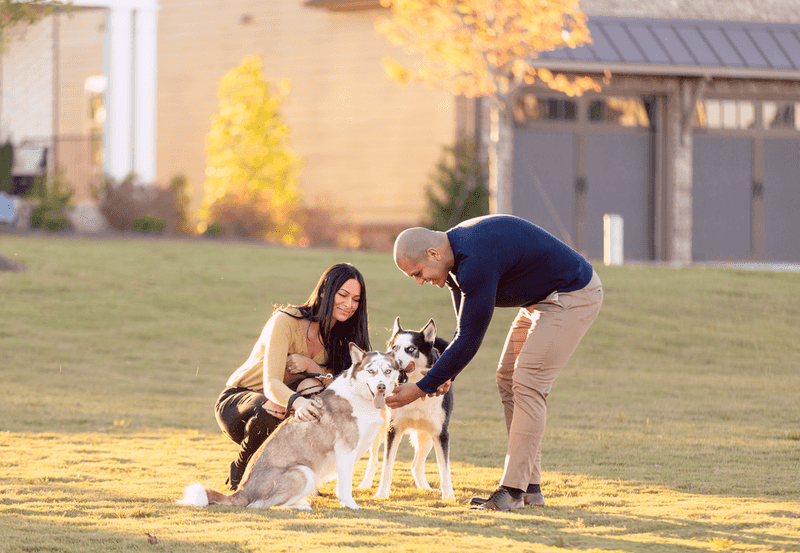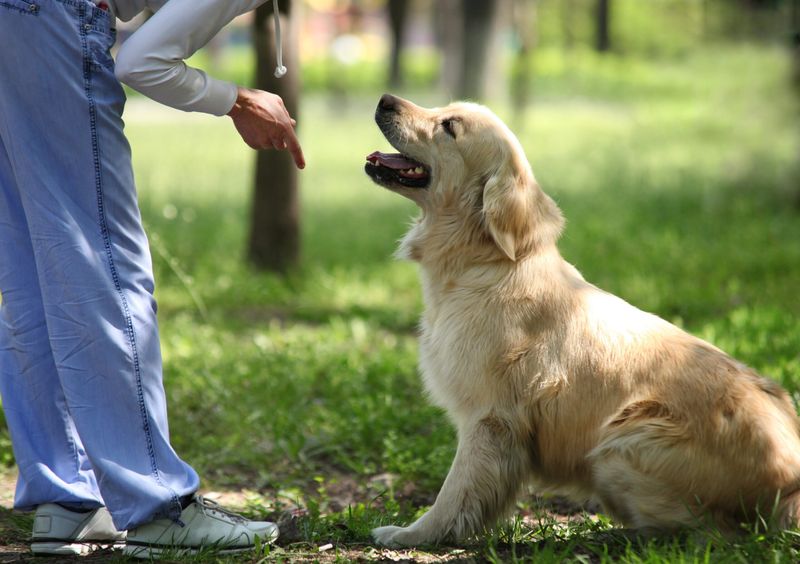14 Pros And Cons Of Taking Your Dog To A Dog Park

Taking your furry friend to a dog park can be a thrilling adventure, filled with both delightful surprises and potential pitfalls. While your pup might enjoy the freedom and social interactions, there are factors to consider to ensure it’s a positive experience.
In this list, we’ll explore distinct pros and cons of visiting a dog park, each offering unique insights and tips to make the most of your outing. From socialization perks to safety concerns, we’ll provide a comprehensive look at what you and your dog might encounter.
1. Pro: Socialization Opportunities

A bustling dog park is a perfect place for your pooch to meet new friends and learn the ropes of doggy social etiquette. These spaces offer a unique opportunity for dogs to interact with their peers, which can be especially beneficial for puppies and newly adopted pets.
By mingling with a diverse canine crowd, dogs can develop better communication skills and build confidence. Moreover, socializing in a dog park can help reduce anxiety and social awkwardness in dogs.
It allows them to experience different sizes, breeds, and personalities, leading to a more well-rounded temperament. For owners, it’s a chance to meet fellow dog lovers and exchange tips and stories.
However, it’s crucial to monitor interactions and ensure they are positive. Overly rough play or aggressive behavior can quickly turn a fun outing into a stressful situation. Always watch your dog’s body language and intervene if necessary to maintain harmony.
2. Con: Safety Concerns

While dog parks offer fun and freedom, they also present potential safety risks. Dogs of all sizes and temperaments can gather in these communal spaces, leading to possible altercations or injuries. Owners must remain vigilant and ready to step in if play becomes too rough or aggressive. Certain dogs may not be fully vaccinated, introducing the risk of spreading diseases. Before visiting, ensure your dog is up-to-date on vaccinations and flea control to minimize health risks. Additionally, watch out for hazards like holes in the ground or broken fences. These can pose dangers to both dogs and their owners. Keep your dog within sight and be prepared to move to a different area if safety concerns arise. By staying alert, you can help create a safe environment for everyone at the park.
3. Pro: Exercise Galore!

Dog parks are havens for high-energy pups needing to burn off some steam. The open space provides ample room for running, jumping, and playing fetch, ensuring your dog gets plenty of physical activity. Regular visits can significantly improve your dog’s fitness, stamina, and overall health.
Engaging in play with other dogs can also enhance coordination and agility. Dogs that might otherwise be bored at home can find a thrilling outlet for their energy, reducing the likelihood of destructive behavior.
Yet, with all this activity, it’s vital to remain mindful of your dog’s limits, especially in hot weather or if they are not used to rigorous exercise. Always bring water and take breaks as needed to prevent exhaustion. Keeping an eye on your dog’s energy levels ensures they have fun without overdoing it.
4. Con: Potential For Overstimulation

Amidst all the excitement, some dogs may become overstimulated at the park. The sights, sounds, and smells can be overwhelming, especially for puppies or dogs unused to such bustling environments.
This overstimulation might manifest as hyperactivity, anxiety, or stress. It’s important to read your dog’s body language and recognize signs of discomfort or fatigue. A relaxed walk to a quieter area of the park might help them calm down.
Encouraging positive interactions with friendly dogs can also ease their nerves. If your dog seems consistently overwhelmed, it might be beneficial to gradually expose them to the park for shorter periods.
Building their confidence over time ensures that they can enjoy the experience without feeling stressed or anxious.
5. Pro: Training Reinforcement

Dog parks aren’t just for play—they’re a valuable training ground too! With numerous distractions, they offer a real-world environment to reinforce training commands. Practicing commands like “sit,” “stay,” or “come” amidst the chaos can solidify your dog’s obedience skills.
The park can also be a perfect setting for socialization training. Teach your dog to meet and greet other pups politely, helping them learn boundaries and respect for personal space. Remember, patience is key. Training in a dog park requires consistency and positive reinforcement.
Celebrate small victories and don’t be discouraged by setbacks. With time and effort, your dog will become adept at following commands, even with all the excitement around them.
6. Con: Risk Of Disease

Dog parks, while social and fun, can also be breeding grounds for germs and parasites. With many dogs in one place, the potential for diseases like kennel cough or parasites such as fleas and ticks is heightened.
It’s crucial to maintain your dog’s health with regular vaccinations and parasite prevention measures. Before visiting, check your local park’s cleanliness and maintenance standards. Some parks have regulations in place to minimize health risks, but vigilance is always necessary.
After a trip to the park, examine your dog for any signs of illness or parasites. Quick action can prevent minor issues from escalating. By being proactive, you can protect your dog’s health and enjoy the perks of the dog park with peace of mind.
7. Pro: Owner Socialization

Dog parks aren’t just for furry friends; they’re social hubs for owners too! Meeting other dog enthusiasts can lead to new friendships, advice exchanges, and even playdates for your dogs. Sharing experiences and stories can be both entertaining and educational.
Being part of a community of dog lovers fosters a sense of belonging and support. It’s a great way to get tips on training, diet, or any other canine concerns you might have. However, while socializing, it’s essential to remain attentive to your dog.
Balancing interactions with other owners and supervising your pet ensures everyone has a pleasant time. By engaging with fellow dog lovers, you and your dog can both enjoy the social benefits of the park.
8. Con: Behavioral Challenges

In the lively atmosphere of a dog park, some dogs may exhibit behavioral challenges. Overexcited pups might jump, bark excessively, or become unruly, while others may show signs of aggression or dominance.
Such behaviors can disrupt the peace and safety of the park environment. Owners play a vital role in managing these challenges. It’s important to correct undesirable behaviors promptly and assertively, using positive reinforcement techniques.
Consistent training can significantly improve your dog’s manners and interactions with others. If your dog struggles with behavioral issues, consulting a professional trainer might be beneficial.
Tailored guidance can address specific concerns and enhance your dog’s behavior in such social settings, ensuring a harmonious visit for everyone involved.
9. Pro: Off-Leash Freedom

One of the greatest joys for dogs at a park is the freedom to roam off-leash. This freedom allows them to explore, run, and play without restrictions, which is often not possible on daily walks. It’s a chance for your dog to express their natural behaviors and enjoy a sense of liberation.
Off-leash play encourages natural social interactions and can significantly enhance your dog’s confidence and happiness. They can explore varied terrains, smells, and sights, enriching their experience. However, it’s important to ensure that your dog has reliable recall skills when off-leash.
Being able to call them back promptly is crucial for their safety and the safety of others. With the right training, off-leash time at the dog park can be a delightful and enriching experience for your canine companion.
10. Con: Unpredictable Weather

Weather can be an unpredictable factor when visiting a dog park. Sudden rain, extreme heat, or chilly winds can quickly change the dynamics of a park visit. Being prepared for various weather conditions ensures a comfortable and enjoyable experience for both you and your dog.
Pack essentials like water, sunscreen, or a raincoat depending on the forecast. An impromptu change in weather might require a swift departure, so it’s good to have a back-up plan for indoor activities. Awareness of weather conditions can also help prevent health issues like heatstroke or hypothermia.
By being prepared and adaptable, you can make the most out of every dog park outing, regardless of the weather.
11. Pro: Different Dog Personalities

Dog parks are a melting pot of canine personalities, each as unique as a snowflake. From boisterous extroverts to shy introverts, the park hosts a colorful array of characters. Understanding these differences enhances the experience for both dogs and owners.
Some dogs may thrive in social settings, while others might need gentle encouragement to join in. Recognizing your dog’s personality helps manage their interactions and ensures they are comfortable and safe. Patience and observation are key.
Allow your dog to engage at their own pace, and intervene when necessary to prevent unwelcome interactions. Embracing the diversity of personalities in the park can lead to delightful discoveries and friendships for both you and your pup.
12. Con: Potential For Escapes

Despite the fun and excitement, dog parks pose a potential risk of escape. Open gates, gaps in fences, or a momentary distraction can give an adventurous dog the chance to wander off. Ensuring the park’s perimeter is secure is crucial for safety.
Always observe and assess the enclosure upon arrival, looking for weak points that might tempt a curious pup. While inside, maintain a vigilant eye on your dog, especially if they have a penchant for exploration. Training your dog with a reliable recall command is essential.
It provides an added layer of security, allowing you to call them back promptly if they attempt to bolt. With these precautions, you can enjoy the park’s benefits without the worry of unintended escapades.
13. Pro: Strengthened Bonds

Visits to the dog park can be a fantastic way to strengthen the bond between you and your furry friend. Sharing new experiences and adventures fosters trust and deepens your connection. It’s an opportunity to learn more about each other’s personalities and preferences.
Engaging in playtime or training exercises at the park enhances communication and mutual understanding. These shared moments contribute to a more harmonious relationship and a happier dog. Take the time to observe your dog’s interactions and behaviors.
Understanding their likes and dislikes helps tailor future outings for maximum enjoyment. By nurturing this bond, you’ll create cherished memories and a special rapport with your canine companion.
14. Con: Noise Levels

Dog parks can be lively places, and this often means an abundance of noise. For some dogs, the sounds of barking, growling, and playful yelps can be exciting, enhancing their playtime experience.
However, for other dogs, especially those who are more timid or have anxiety, the noise can be overwhelming and stressful.
If your dog is sensitive to noise, it’s crucial to monitor their reactions closely. Consider visiting the park during less busy times to assess how your dog copes with the auditory environment. This way, you ensure their comfort and enjoyment while bolstering their confidence in social settings.






